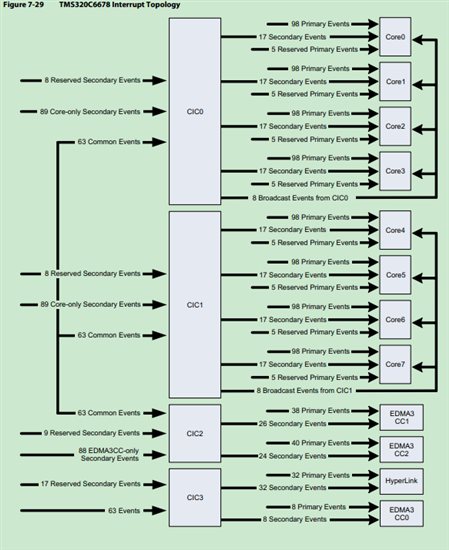Hi everyone,
for the example of PDK pdk_C6678_1_0_0_17\packages\ti\csl\example\cpintc,there is a code like this:
hnd = CSL_CPINTC_open(0);
does the Argument 0 mean the CIC0?
and for the code
((CSL_CPINTC_RegsOvly)CSL_CP_INTC_0_REGS)->STATUS_SET_INDEX_REG = 3;
I can not find anything about CSL_CPINTC_RegsOvly,CSL_CP_INTC_0_REGS or STATUS_SET_INDEX_REG ,what do those mean?and what does the code means?
for the code
CSL_CPINTC_setNestingMode (hnd, CPINTC_NO_NESTING);
what is the NestingMode? where can i find some information about this?thanks


